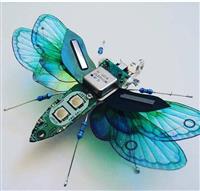
PCB etching health hazards
I am trying to etch PCBs in a dorm room, but before I start preparing vats of etchant I was hoping to learn a little more about how volatile the various etchants are and how dangerous their fumes are. My plan was to etch the PCBs outside (using ferric chloride as the etchant), then keep the leftover etchant in a sealed glass pyrex container in my room. The problem is that I don't know much about chemistry or what kinds of gasses might build up in my dorm without me knowing. I know that under the right circumstances this stuff can produce chlorine gas, so I want to make sure I get rid of my ignorance before it gets rid of me!
My questions boil down to:
1.) How volatile is ferric chloride/do you think a pyrex container sealed in a plastic gallon bag would be safe to keep in a room where you sleep?
2.) Are there other etchants that might be less hazardous (if ferric chloride is cause for concern).
- Comments(1)
A****min
Nov 28.2019, 09:12:15
Ferric chloride is not very volatile or particularly harmful, no gasses or smell comes off it but it does leave horrible yellow stains on pretty much anything it comes in contact with. So make sure you protect any furniture you do it on.
Personally the etchant i liked the most was sodium persuflate. Comes in a white crystalline form (looks like salt) and it just gives of oxygen as its working, no nasty smells, works faster than ferric chloride too while not leaving any dirty stains. Since its clear and turns slightly blue as its used means you can also easily see the progress trough the liquid.
The one you really want to avoid is using HCl acid mixed with peroxide. While it does etch much faster than most methods (can etch it literally in a minute) but also gives off lots of nasty fumes that form in to acid when they come in contact with moisture. This includes your eyes and lungs and since the air contains moisture it also leaves acid on everything else, cording metal objects near by. The stuff absolutely can NOT be used indoors unless you do it in a fume hood.



